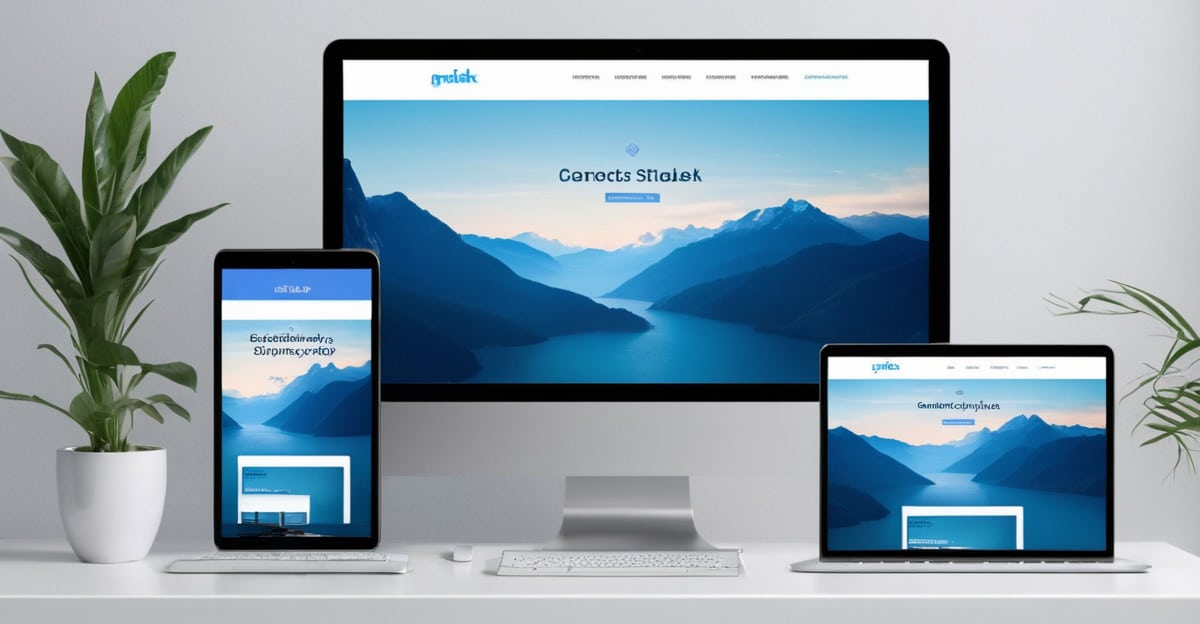Introduction: Why a Freelance Portfolio Website Matters in 2024
Having a beautiful portfolio website is essential in the cutthroat world of freelancing. Showcasing your abilities and achievements online may be crucial to securing your next major assignment as we enter 2024. In addition to showcasing your experience, a well-designed freelance portfolio increases credibility with prospective customers. This post will walk you through 10 crucial steps to make a unique freelancing portfolio website.
Key Takeaways
- Building a freelance portfolio website is crucial for showcasing your skills in 2024.
- Define your brand identity to create a unique and memorable site.
- Choose the right platform based on your technical skills and budget.
- Craft compelling content and design a user-friendly layout.
- Optimize for SEO to increase visibility and attract clients.
- Regularly update and maintain your portfolio to keep it fresh and relevant.
Step 1: Define Your Brand Identity
It is crucial to establish your brand identity before constructing your portfolio. What makes you special, you ask? Which services are available? Your professional style and personality should be reflected in your brand. Think about your logo, color palette, and even the tone of your writing. A unified brand identity makes it easier for customers to identify and recall you.

Step 2: Choose the Right Platform
It’s crucial to select the appropriate platform for your freelance portfolio website. Squarespace, Wix, and WordPress are a few well-liked choices. Every platform has its own features, so take your budget and technical proficiency into account. For example, WordPress is quite customizable, but it could need more technical expertise. On the other hand, drag-and-drop interfaces are simpler on platforms like Squarespace and Wix.
Step 3: Craft Compelling Content
The core of your portfolio is your content. Write enticing copy that explains your abilities, background, and offerings. Make your information easy to read by using attention-grabbing headlines and bullet points. Don’t forget to include case studies and testimonials that highlight your prior accomplishments. This not only increases your credibility but also shows prospective customers what you are capable of.

Step 4: Design a User-Friendly Layout
Having an easy-to-use layout is crucial to retaining visitors on your website. Make sure your website has a clear menu structure and is straightforward to use. To prevent clutter and draw attention to important content, make good use of white space. As more people browse on mobile devices, mobile responsiveness is also essential. To guarantee that every visitor has a flawless experience, test your website across a range of devices.
Step 5: Optimize for SEO
Increasing visibility requires optimizing your portfolio website for SEO. Make use of pertinent keywords in picture alt tags, meta descriptions, and titles across your website. Provide top-notch content that addresses the concerns and queries of prospective customers. Make sure your website has an SSL certificate for security and loads swiftly. Improved search engine rankings are a result of these elements.

Step 6: Highlight Your Best Work
In a portfolio, it’s important to highlight your best work. Choose tasks that best showcase your abilities and accomplishments. If at all feasible, add high-quality photos or videos along with thorough descriptions. If appropriate, describe the difficulties you encountered and how you resolved them. This illustrates both your skill set and your capacity for problem-solving.
Step 7: Include a Blog Section
You may demonstrate your expertise and draw in additional visitors by including a blog area in your portfolio. Write about thoughts, advice, and developments in the market that can be useful to prospective customers. Content that is updated frequently can help your site rank higher in search results and position you as an authority in your industry. Permitting comments and sharing on social media will promote engagement.
Step 8: Integrate Social Proof
Including social proof, like customer reviews and recommendations, can greatly increase your trustworthiness. Put reviews front and center on your website, and if it’s okay, think about using the logos of previous customers. Potential customers are more likely to choose your services when they feel reassured by social proof that you are dependable and trustworthy.
Step 9: Provide Clear Contact Information
Make sure your contact details are readily available. Provide a specific contact page with a form and additional information, such as your phone number and email address. Make it simple for prospective customers to get in touch by offering a variety of contact methods. For quick questions, think about including a live chat function as well. Clients are more likely to get in touch with you if it’s simple for them to do so.
Step 10: Regularly Update and Maintain Your Portfolio
It’s crucial to maintain your portfolio up to date when it goes online. Add testimonials, blog entries, and new projects on a regular basis. Look for out-of-date material and broken links. In addition to keeping your website updated, regular maintenance lets search engines know that it is active, which can raise your site’s search engine ranks.
Conclusion: Launch Your Freelance Career with Confidence
In 2024, creating an eye-catching website for your freelance portfolio is essential to job advancement. These ten steps will help you build a website that not only highlights your abilities but also draws in potential customers. Keep in mind that your portfolio should develop and change along with you because it is a living document. Knowing that your website showcases your greatest qualities will allow you to start your career with confidence.






